Bears are very dangerous and live in almost every state. In some places, it is not unusual to encounter them in towns while in other places they usually keep to unpopulated areas. But wherever they are, the danger of attack is present. If bears live near your house or if you visit their territory only once in a while, you could be attacked.
And even with a firearm, be it a rifle, shotgun or handgun, a bear attack is not easy to stop. They are big, powerful animals with a great deal of natural body protection, a devastating bite, and flesh-ripping claws. Their muscles are dense and they have heavy, thick bones, especially the skull, that protects them against bullet penetration.
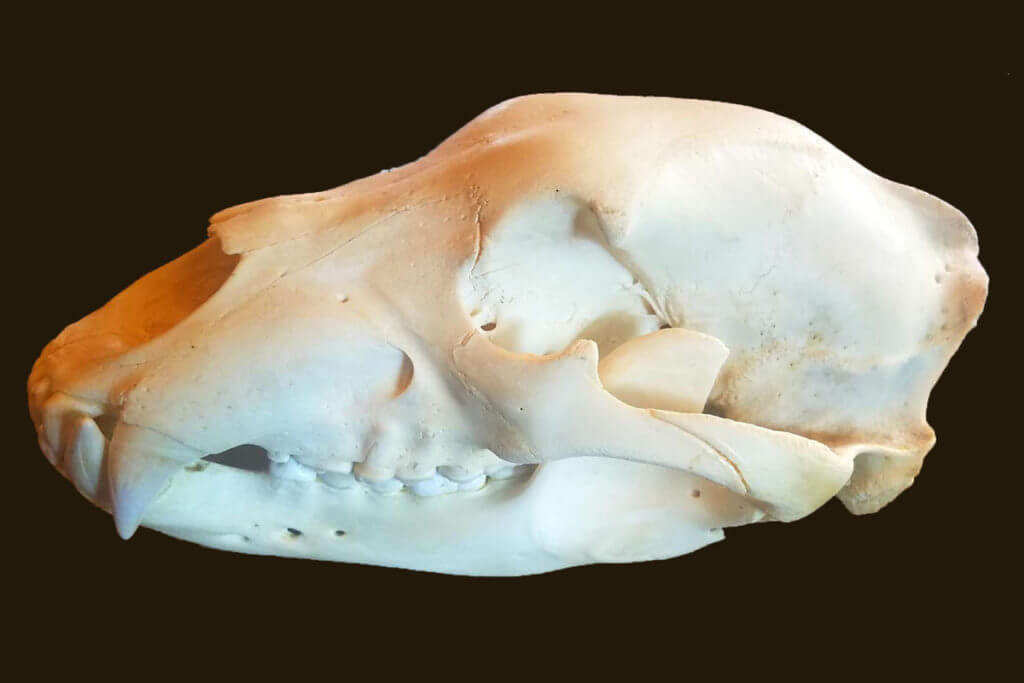
If attacked, the stop must be instantaneous because even if the defender manages to place a killing shot, the bear might live long enough to continue the attack and kill the victim. About the only certain way to stop a bear immediately is to place a bullet into the central nervous system, and the best place for such a shot is the brain. But it is surrounded by a very thick skull. Many bears have been shot in the head with the bullet glancing off, making a nasty cut, but not stopping the bear. A shot to the lungs or heart may eventually kill the bear, but the bear may live long enough to complete the attack before dying. Severing the spinal column might work, but that’s a very small area to hit.
Penetration with a large enough bullet to instantly damage tissue is important. But even a bullet with superior penetration will not get the job done unless it hits the right place. Again, a heart or lung shot may eventually stop a bear and even kill it, but maybe not fast enough. A brain shot though will instantly stop nervous system function and cause the bear to collapse if the damage is severe enough. Most experts knowledgeable in the field agree that the minimum round acceptable for such a job is a .44 Magnum using a hard cast lead bullet. A powerful rifle bullet offering good penetration will also work as will a shotgun slug. But all have their limitations.
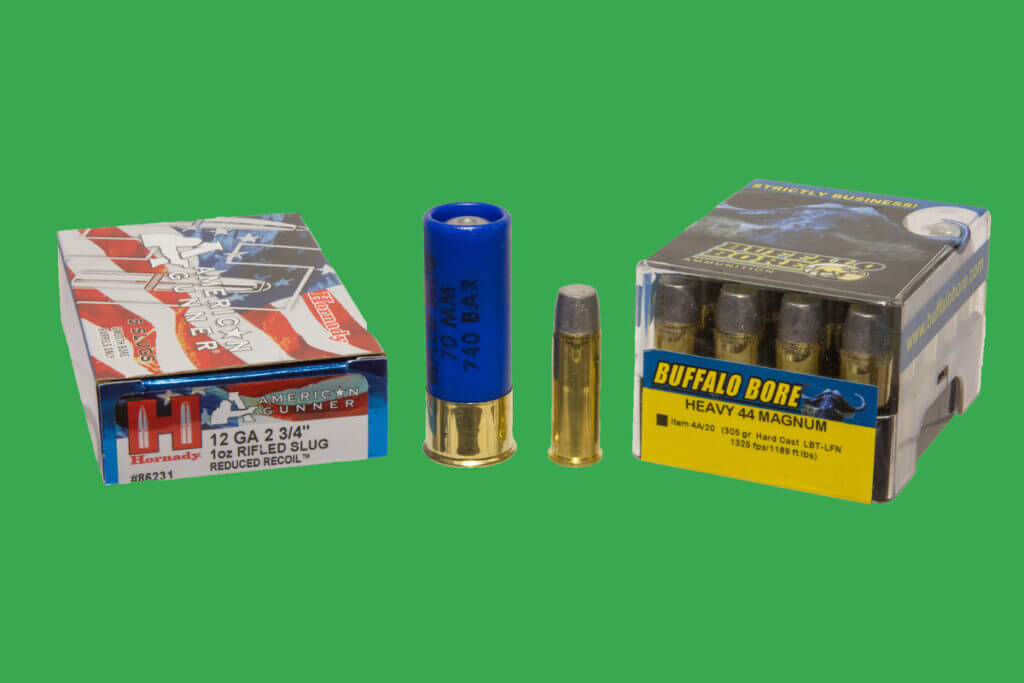
To learn more about stopping bears, a group of gun writers recently attended a predator defense class at Gunsite Academy, arguably the best – certainly the oldest privately owned – gunfighting school in the world. Handguns and shotguns were both studied and used in training.
ORIGIN OF CLASS
Back in 1977, a field geologist working in Alaska was attacked by a predatory black bear. At that time though, employees of the United States Geological Survey (USGS) were not allowed to carry firearms. As a result of that attack, in 1978 the USGS began a firearm program, but after a time, decided that better training was needed. So the USGS came to Gunsite in 2000 for help. Gunsite then developed a five-day class to teach predator defense using handguns and long guns.
Studies have shown that about 84% of all effective use of a firearm against a bear attack is with a handgun. That’s probably because victims that are successful in defending against a bear attack are more likely to have a handgun immediately accessible. While a rifle or shotgun can be effective, too often they cannot be brought into action quickly enough. They may be carried slung or may have been set down to free the hands for some other task. But a handgun can be carried on the person at all times and with training, can be drawn and fired in a fraction of a second.
While the focus of the training was on defense against attacking bears, it is important to realize that dogs, especially when roaming in packs, can be far more dangerous and are certainly more common. And dogs can and are frequently encountered in urban environments. Wolves and coyotes can and do attack people, and the incidence of mountain lion attacks is increasing, even in populated areas. While bears are probably the most robust and most difficult attackers to defend against, dogs, coyotes, wolves, and mountain lions are also a dangerous threat.
EQUIPMENT
While at Gunsite, I carried and trained with a Smith & Wesson Model 629 .44 Magnum revolver. It’s a stainless steel gun that is a fine choice for bear defense, but it can be greatly improved. The gun I carried had been customized by Gritus Precision with a superb trigger job which reduced the double-action trigger pull by about three pounds to around ten pounds and made it extremely smooth and easy to shoot accurately. The orange ramp front sight was also replaced with a gold dot. Gold dots have been around for a long time and, it could be argued, were the original night sight. In any light, the gold dot seems to glitter and draw the eye.
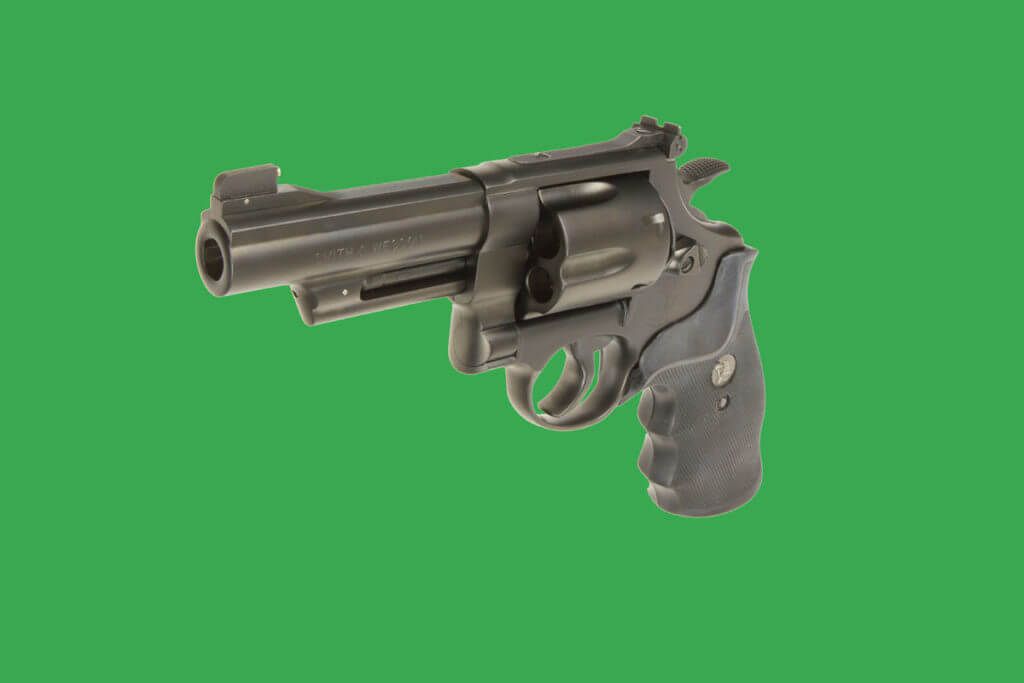
The 629 was also refinished in the new and excellent ArmorLube hard black finish that is available only from Plasma Technologies Inc. Plasma Technologies will finish guns sent to it from only five gunsmith shops in the U.S., so it is not easy to get. It is a superior finish to anything else available though in terms of hardness and lubricity. To get this finish, contact one of the shops listed below.
| Wright Armory | Mesa | AZ | wrightarmory.com |
| Amerigun USA | North Branch | MI | www.amerigunusa.com |
| Cylinder and Slide | Fremont | NE | www.cylinder-slide.com |
| Vang Comp Systems | Chino Valley | AZ | vangcomp.com |
| Cajun Gun Works | West Monroe | LA | cajungunworks.com |
I also trained with the excellent Mossberg 590A1 Magpul shotgun chambered in 12 gauge. It is capable of shooting both 2 3/4 inch and 3-inch shells, and the magazine capacity with 2 3/4 inch shells is nine. An XS Sights rail with aperture sight was installed on it and I added a SIG Romeo4 red dot sight to make target acquisition and aiming extremely fast. The rail and aperture make for a rock-solid mount and excellent backup iron sights. Why a red dot to aim? Despite popular belief, shotguns need to be aimed when shooting for defense. At self-defense distances, the shot pattern is very small, not a wide cloud of shot. And for bear defense, a slug is a much better choice than bird or buckshot.
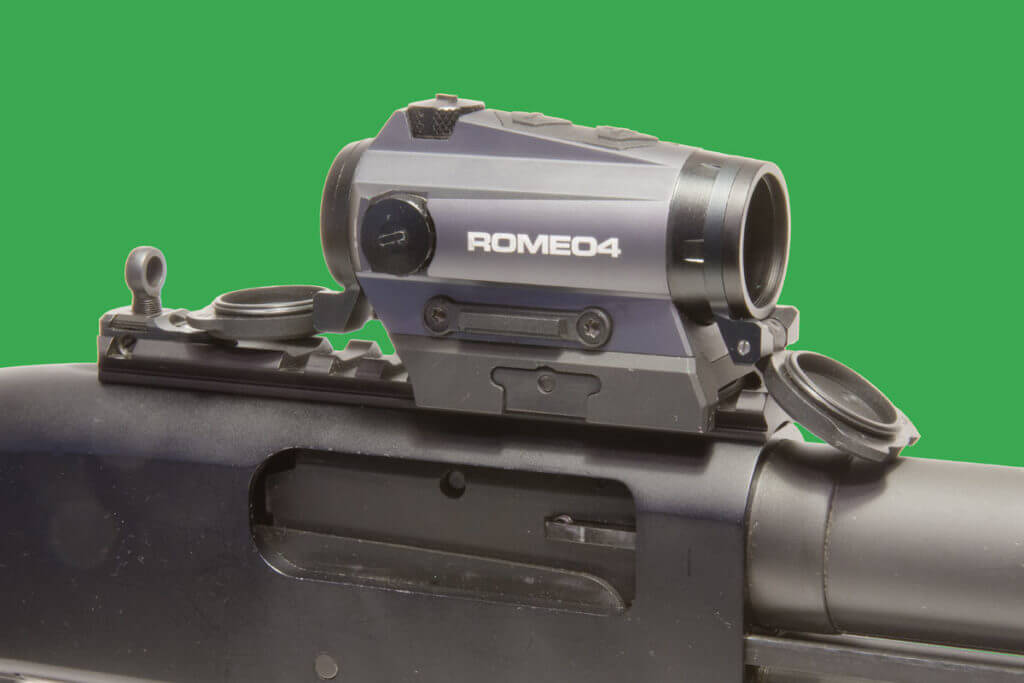
THE BEAR CHARGE
When a bear is on the attack, it does not present itself for a side shot to the heart, lungs or even the spine. And the chest is extremely hard to penetrate. Besides, as explained earlier, a heart or lung shot is not what is called for to stop a charge. The best place to shoot a charging bear is in the nose, and that’s not a very large target. Behind the nose, there is a channel in the skull leading directly to the brain. It contains relatively soft cartilage, and the snout and ocular area are relatively thin and soft compared to the rest of the skull. So for the most likelihood of good penetration into the brain, placing a round into the nose is the best bet.
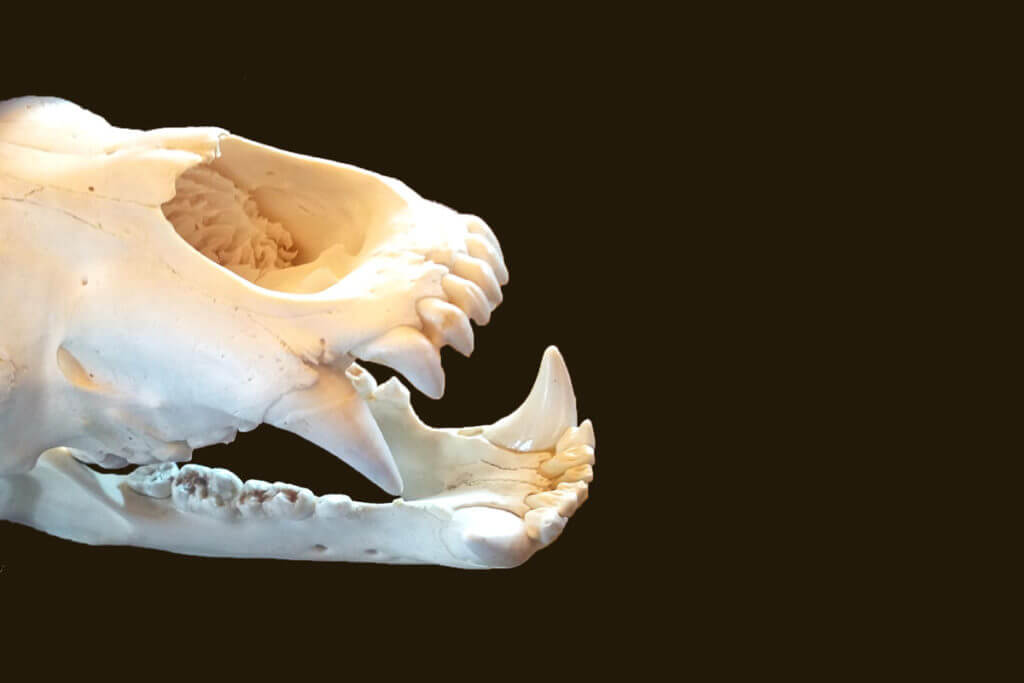
A shot to the nose is pretty hard to do under stress in a second or less when the bear is running full speed at you. But it can, and has to be, done. The way to do it is to first get proper training in presenting, aiming and firing the gun, and then to practice doing it while an instructor watches and corrects mistakes. There may be a few gifted individuals who can master that skill without instruction, but there are not many. So spend the time and money to get the training. We’re talking life and death here, and a bear mauling is a pretty gruesome way to die.

If using a shotgun or rifle for protection in bear country, don’t set it down for even a second. And carry it in your hands, not slung. You might have enough time to get it off your shoulder and into action if a bear springs from behind a bush, but probably not. That’s why a good handgun may be a better choice. It’s always at hand if carried properly.
Another alternative to a revolver for those who feel more comfortable with a larger capacity handgun is a 10mm semi-automatic loaded with heavy-hitting hard cast cartridges like those from Doubletap Ammunition.
BEAR TYPES
In North America, there are three types of bears and they can all be very dangerous. Polar bears live in the extreme northern territories, so the average person is unlikely to encounter one. Grizzly bears, or Brown bears, are more widely dispersed and live in some of the northern states. People encounter them once in awhile, but Grizzly bear territory is not nearly as large as it once was. There’s a reason for that. Grizzlies are extremely dangerous and ranchers and settlers worked hard to eliminate them. Some misguided people want to reintroduce them though, so stay vigilant.
Black bears are pretty common in the Continental US and can be found in almost all the states except for some mid-western states. And at least one expert has said that Black bears are psychos. Black bears will actually stalk humans and prey on them. They have been known to bury live animals and then return to eat them. Black bears are very focused on getting food and will stalk prey, making wide spiraling circles while they close in. And they sometimes look at humans as food. While not as large as Grizzlies, Blacks are vicious predators none-the-less.
A Black bear can run very fast, so there is little time to respond to an attack. It is estimated that one can run 50 yards in three to four seconds. And hunters should be especially careful when harvesting other game. Some bears have become so use to hunters shooting deer, that they respond to a gunshot as if it were the dinner bell. They will head towards the sound in a hurry, anticipating an easy meal. And more than one hunter has been charged by a bear when dressing game. Setting a rifle down to dress game puts it out of immediate reach, which is another reason having a handgun in an easily accessed holster, and knowing how to draw and fire it quickly, is a good survival skill to have.
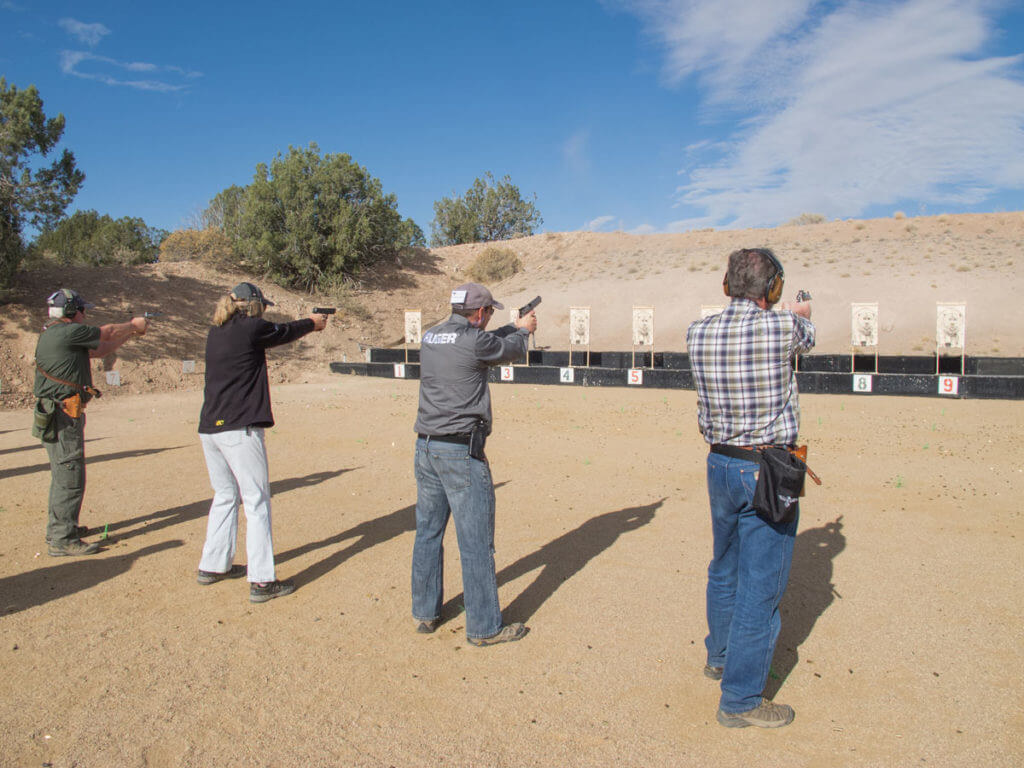
TRAINING
At Gunsite, we were instructed on how to carry a handgun and a shotgun for quick access and how to bring either on target and fire an accurate shot quickly. A training aid was a bear target mounted on a remote controlled mobile target stand with which the instructor could simulate a bear charge. While most often a bear will charge in a straight line, nothing says it will not veer to the right or left without warning. And the head does not remain completely still. The target robot bounced around quite a bit during a charge over the rough ground, and students found out how really difficult making a quick precision shot, even at close range, can be. With practice though, it can be done. It’s a life-saving skill and you need expert instruction and practice to make it instinctive.
Whether it is wild dogs, coyotes, mountain lions, bears or even a vicious domestic dog, get some training in stopping animal attacks and stay aware in order to stay alive.